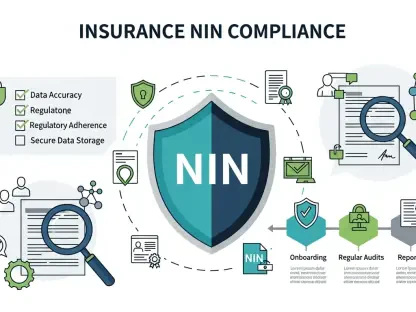In the intricate world of high net worth (HNW) insurance, brokers face unprecedented challenges that test their expertise, adaptability, and emotional acumen like never before, pushing them to navigate a niche market serving affluent clients with complex portfolios. These portfolios often include sprawling estates, cutting-edge smart homes, and unique collectibles, all of which come with sky-high expectations for service and results. The stakes are immense, as a single claim can involve millions in damages, while the pressure to deliver personalized attention remains unrelenting. Economic pressures, such as soaring construction costs, alongside evolving risks from technology and climate, create a landscape where missteps are costly. Moreover, the demand for a human touch in an increasingly digitized insurance industry sets HNW claims apart, pushing brokers to balance technical precision with empathy. This dynamic environment not only challenges traditional approaches but also redefines the very role of brokers in managing claims for the elite.
The Imperative of Personalized Service
The HNW insurance sector stands as a bastion of personalized service in an era where automation dominates mainstream personal lines. Affluent clients expect more than just a transactional relationship; they demand hands-on, face-to-face interaction, especially during the chaotic early stages of a claim. This often means daily updates or multiple conversations to provide reassurance and clarity when distress is at its peak. Brokers must wear many hats, acting as both technical advisors and emotional anchors to maintain trust. The ability to tailor communication to each client’s unique needs—whether addressing concerns about a damaged heritage property or a prized art collection—becomes a critical skill. Without this bespoke approach, even the most competent handling of a claim can fall short in the eyes of those accustomed to exceptional care, placing immense pressure on brokers to deliver consistently.
Beyond the immediate need for personal interaction, the long-term relationship with HNW clients hinges on a broker’s ability to anticipate and adapt to individual preferences. This goes far beyond standard customer service, requiring deep knowledge of a client’s lifestyle, assets, and even personal values to ensure every interaction feels uniquely relevant. For instance, understanding a client’s attachment to a family heirloom can shape how a claim is presented and processed, turning a routine task into a deeply meaningful resolution. Such nuanced engagement is not just a value-add but a fundamental expectation in this market, where loyalty is hard-won and easily lost. The challenge lies in sustaining this level of attention across multiple high-stakes claims without sacrificing efficiency or accuracy, a balancing act that continuously tests a broker’s capacity to prioritize and personalize under pressure.
Navigating Soaring Costs and Complex Claims
One of the most daunting hurdles in HNW claims management is the relentless escalation of costs driven by broader economic trends. Post-COVID supply chain disruptions and inflation have significantly increased the expense of rebuilding or repairing high-end properties, especially heritage estates that require specialized materials and compliance with stringent regulations. Temporary accommodation for displaced clients often ranges from $25,000 to $50,000 per month, with delays or mandatory lease terms compounding the financial strain. Brokers must navigate these exorbitant figures while ensuring clients understand the realities of such expenses, often under intense scrutiny. The complexity of these claims demands meticulous attention to detail, as even minor oversights can lead to substantial financial repercussions for all parties involved.
Compounding the issue of rising costs is the persistent threat of underinsurance, a problem that frequently surfaces only after a loss has occurred. Many HNW clients rely on outdated valuations that fail to reflect current market conditions, leaving significant gaps in coverage for rebuilding or replacing high-value assets. Brokers are tasked with bridging this divide, often having to deliver difficult news about policy limitations while working to secure alternative solutions. This requires not only a deep understanding of insurance intricacies but also the diplomatic skill to manage client expectations without eroding trust. The financial and emotional toll of underinsurance adds yet another layer of difficulty, pushing brokers to advocate for regular policy reviews and updated appraisals to prevent such scenarios from arising in the first place.
Adapting to Evolving Property Risks
The risk landscape for HNW properties has undergone a dramatic transformation, driven by technological advancements and environmental shifts that introduce new vulnerabilities. Modern high-end homes often feature sophisticated smart systems comparable to commercial setups, where a single incident like water damage can disrupt interconnected networks controlling lighting, HVAC, or security. Such cascading failures amplify the scope and cost of claims, requiring brokers to possess a working knowledge of these technologies to assess damages accurately. Staying ahead of these risks means anticipating how a minor glitch could escalate into a major loss, a task that demands both foresight and technical insight in an ever-changing field of home innovation.
Environmental factors further complicate the risk profile, with climate-related events like urban flash flooding becoming more frequent and severe. Properties in affluent areas are not immune, and basements—often housing valuable amenities or collections—can render entire homes uninhabitable after a single deluge. Brokers must guide clients through these unpredictable threats, advocating for preventive measures such as flood barriers or revised property layouts while ensuring policies account for such exposures. This evolving dynamic challenges the traditional scope of claims management, pushing professionals to think beyond immediate damages and consider long-term resilience. The ability to adapt to these dual forces of technology and nature is now a cornerstone of effective service in the HNW sector.
Redefining Coverage for High-Value Contents
The nature of high-value contents in HNW homes has shifted significantly, moving beyond traditional luxury items to encompass a broader array of assets that reflect contemporary lifestyles. Designer handbags, limited-edition sneakers, and cutting-edge electronics now join fine art and jewelry as prized possessions, many appreciating in value on the secondary market. Brokers face the task of ensuring coverage keeps pace with these trends, requiring an understanding of niche markets and fluctuating valuations that can change rapidly. This adds a layer of complexity to claims, as underestimating the worth of such items can lead to disputes or inadequate settlements, testing a broker’s ability to stay informed and proactive in policy adjustments.
Moreover, the emotional and cultural significance of these modern collectibles often heightens the stakes during a claim. Clients may view a rare sneaker or a limited-run gadget as more than just an asset, attaching personal stories or status to their ownership. Brokers must navigate this sentiment with sensitivity, ensuring that the claims process acknowledges these intangible values while securing fair compensation. This dual focus on market expertise and emotional intelligence underscores the evolving role of professionals in this space. Keeping abreast of client lifestyles and emerging collectible trends becomes essential, as does the ability to translate that knowledge into tailored insurance solutions that protect both financial and personal investments.
Building Strength Through Collaboration
Effective management of HNW claims relies heavily on the synergy between brokers and adjusters, a partnership that can make or break the client experience. Transparent communication, such as involving brokers in initial site visits and providing regular updates, ensures consistency in messaging and support, particularly during challenging moments like partial claim denials or unavoidable delays. This collaborative approach helps align all parties on the specifics of a claim, minimizing misunderstandings that could frustrate clients already under stress. The emphasis on teamwork reflects a broader recognition that no single professional can handle the intricacies of HNW claims alone, highlighting the need for shared responsibility and trust.
Additionally, collaboration extends to a deeper understanding of a client’s overall relationship with their brokerage, often encompassing multiple policies across diverse assets. Brokers and adjusters must work together to contextualize a single claim within this larger portfolio, ensuring decisions made on one policy don’t inadvertently impact others. This holistic perspective is vital for maintaining client confidence, as affluent individuals expect seamless coordination across all facets of their insurance needs. The challenge lies in sustaining this level of integration under tight timelines and high expectations, testing the ability of teams to communicate effectively and prioritize client outcomes above internal silos or procedural hurdles.
Embracing Proactive Risk Management
The role of brokers in the HNW sector is undergoing a profound shift, moving from reactive claims handling to proactive risk management that adds tangible value for clients. Identifying potential vulnerabilities before they manifest into losses—whether through outdated valuations or unaddressed environmental exposures—requires a forward-thinking mindset and a deep dive into policy provisions for mitigation opportunities. This strategic pivot positions brokers as trusted advisors rather than mere facilitators, empowering them to guide clients toward preventive measures that safeguard assets over the long term. The ability to anticipate and act decisively in this capacity is becoming a defining trait of success in this demanding market.
Equally critical to this evolution is the role of emotional intelligence in navigating the human element of HNW claims. Clients facing significant losses often experience distress that goes beyond financial concerns, requiring brokers to offer empathy alongside expertise. Building long-term relationships through such sensitivity fosters loyalty and trust, ensuring clients feel supported at every stage. This balance of strategic foresight and personal connection challenges brokers to expand their skill set, blending hard data with soft skills to address both practical and emotional needs. As risks diversify and client expectations rise, this dual competency will remain essential for those aiming to excel in managing claims for the affluent.
Shaping the Future of HNW Claims
Reflecting on the landscape of HNW claims management, it’s evident that brokers have tackled an array of challenges with remarkable resilience. They have confronted escalating costs and complex claims with meticulous oversight, ensuring that even the most daunting financial burdens were addressed with clarity. The evolving risks of modern properties and environmental threats were met with adaptive strategies, while the changing nature of high-value contents prompted a deeper engagement with market trends. Collaboration between brokers and adjusters proved to be a stabilizing force, delivering consistency in the face of adversity. Looking ahead, the path forward lies in doubling down on proactive risk management, leveraging technology to anticipate issues, and refining emotional intelligence to strengthen client bonds. Encouraging regular policy reviews and investing in ongoing education about emerging risks will be key steps to fortify this sector against future uncertainties, ensuring brokers remain indispensable advisors.









